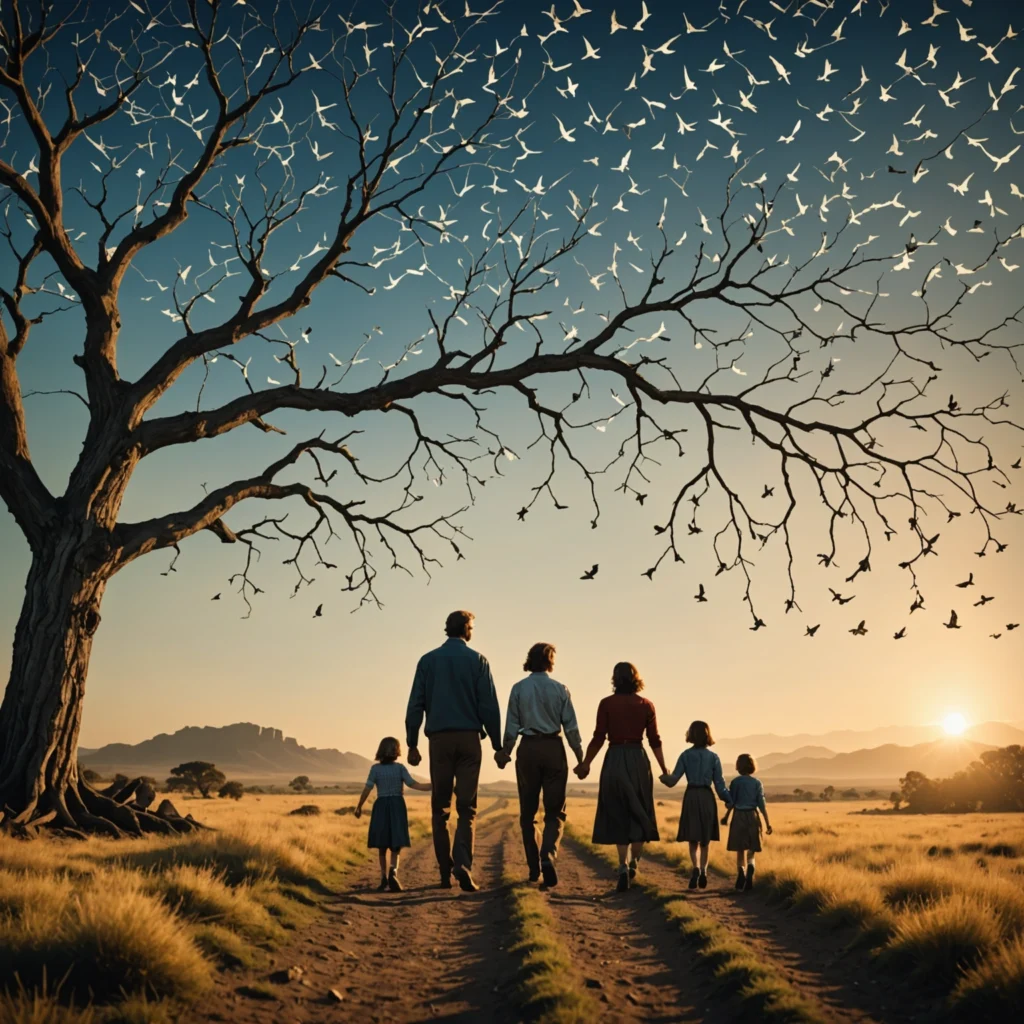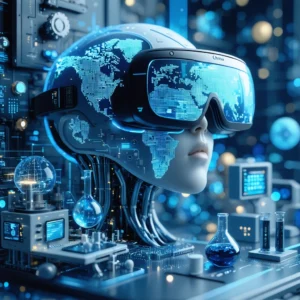
Introduction: Unfolding Ancestral Narratives
Today, innovative researchers boldly explore new frontiers by transforming the static image of family trees into vibrant moving narratives. They devise methods that trace ancestral migrations across continents with dynamic precision. As scientists begin this journey, they integrate historical data with modern genetic analysis and geographic mapping. Moreover, the team achieves exponential progress while incorporating cross‐disciplinary techniques from epidemiology and zoology. Consequently, these breakthroughs captivate audiences and engage communities worldwide. In addition, the research teams celebrate the union of art and science, offering an immersive experience that enlightens viewers about personal and collective ancestry.
Furthermore, the narrative blends scientific discovery with storytelling. Researchers frequently use advanced algorithms and animated visualizations. Gradually, historians, geneticists, and computer scientists craft a seamless synthesis of art and mathematics that resonates with every curious mind. Notably, the method proves applicable to study disease spread and wildlife migrations as well. Hence, the academic community eagerly embraces this transformative perspective, which provides a fresh lens to view both heritage and environmental dynamics.
Tracing Movements and Mapping Histories
Researchers enthusiastically innovate to design genetic movies that capture migration paths. They compile extensive genealogical records, ancient maps, and cutting-edge genetic tests. The scientists then employ data analytics, ensuring that each step of the trajectory appears vividly on screen. Furthermore, experts generate animated depictions that chart ancestry in relation to geographical features over time. The method creates a dynamic experience that invites individuals to witness the emergence of their familial past as if in a cinematic narrative. Consequently, audiences enjoy a richer understanding of historical events and individual heritage.
To illustrate how the process works, consider the following steps:
- Collect familial data from diverse sources.
- Analyze genetic markers and migration patterns.
- Integrate historical maps and databases.
- Assemble animated visualizations that depict ancestral journeys.
Each step guides researchers meticulously, ensuring friendly transparency and robust scientific integrity.
Applications Beyond Ancestry: Disease Spread and Animal Migration
Interestingly, researchers expand the scope of the project beyond personal heritage. They model disease spread by analyzing how pathogens travel among interconnected populations. In this field, animated maps reveal how infections emerge, evolve, and disperse. Additionally, scientists investigate animal migration patterns, enabling environmentalists to witness how species adapt to climate change and habitat loss. Consequently, these dynamic visualizations serve as critical tools in public health and conservation efforts. Moreover, such innovations foster interdisciplinary collaboration, empowering researchers to tackle global challenges collaboratively.
In particular, the animated genetic movie technique provides clarity through visualization, which simplifies complex scientific data. Decision-makers utilize these animations to model potential scenarios and assess strategies. Furthermore, the visual narrative encourages a broader societal comprehension of vital issues. In turn, this clarity bolsters community engagement, education, and prompt interventions during crises.
Technological Integration and Data Visualization
Technological advancements empower researchers to merge various data sources with unprecedented ease. They combine genetic sequencing, statistical modeling, and geographic information systems (GIS) to produce animated outputs. Accordingly, the interdisciplinary team optimizes software that animates migration data repeatedly and cohesively. Additionally, the team develops user-friendly interfaces that invite laypersons to explore their family histories interactively. Consequently, the project transforms static charts into living, breathing narratives of time and space.
Furthermore, data visualization integrates critical supplementary elements such as:
- Color-coded migration routes
- Annotated historical landmarks
- Interactive timelines of significant events
Each element plays a crucial role in amplifying both aesthetic appeal and educational value. In turn, users acquire deeper insights that transcend simple historical records.
Comparative Analysis and Impact Assessment
Researchers perform comparative analysis to gauge the method’s impact on various fields. They prepare tables to summarize applications, methodologies, and outcomes. For instance, consider the table below that outlines the process:
| Aspect | Application | Outcome |
|---|---|---|
| Genetic Data | Family Ancestry Mapping | Immersive Visual Narratives |
| Epidemiology | Disease Spread Modeling | Predictive and Preventive Strategies |
| Wildlife Studies | Animal Migration Tracking | Conservation and Ecological Insights |
Thus, the systematic approach cements the method’s broad applicability. Moreover, multidisciplinary dialogue ongoing ensures that each area benefits from emerging innovations consistently.
Challenges and Future Directions
Researchers confront challenges in integrating vast data sets and ensuring animation accuracy. They tackle issues related to data variability, historical gaps, and computational complexities. Nonetheless, the team adapts by enhancing algorithms and refining analytical frameworks continually. Moreover, they test the technique across multiple scenarios. In addition, the group facilitates feedback loops with both academic peers and community participants. As a result, the researchers move steadily forward while strengthening public trust in the science behind the narrative.
Besides, the future holds abundant opportunities. The method might include real-time tracking and virtual reality experiences. In the coming years, scientists plan to incorporate interactive features that empower individuals to digitally explore ancestral journeys in immersive environments. Consequently, dynamic genetic movies may redefine historical storytelling and education. Eventually, the transformational technology will reshape global perspectives on history and interconnectedness.
Community Engagement and Broader Impact
The revolution in genetic storytelling sparks an array of community-driven projects. Educators, journalists, and historians collaborate closely to spread awareness and encourage participation. They host workshops and online seminars to explain the innovative process. Furthermore, community centers utilize animated family trees to bridge cultural divides and foster intergenerational dialogue. As a result, the newfound technique nourishes lasting connections and shared identities among diverse groups.
Moreover, the project supports several community-centric initiatives such as:
- Heritage preservation programs
- Interactive exhibits in museums
- Digital storytelling projects in schools
Each initiative directly benefits from the method’s accessible design and dynamic narrative approach. In turn, local communities discover the power of personal and collective histories, thereby enriching cultural pride and understanding.
Conclusion: The Dawn of a Dynamic Heritage Era
In summary, researchers transform genealogical representation by converting static family trees into dynamic movies. They integrate genetic data, historical maps, and statistical modeling to create vivid, interactive narratives. Consequently, the method lays the groundwork for advancements in epidemiology and conservation. Researchers also engage communities passionately by making science accessible and visually captivating. Furthermore, technological and artistic integrations drive the project into a future full of promise and innovation. In addition, the method enlivens the significance of tracing one’s roots while illuminating broader historical trajectories.
Ultimately, the project challenges conventional perceptions of history, as each visual narrative unfolds like a cinematic masterpiece. By exploring dynamic storytelling, society embraces new ways to perceive connections between past and present. Therefore, this revolutionary approach redefines the art of heritage and cultural documentation, and it inspires future generations to explore their roots with renewed enthusiasm and insight.






